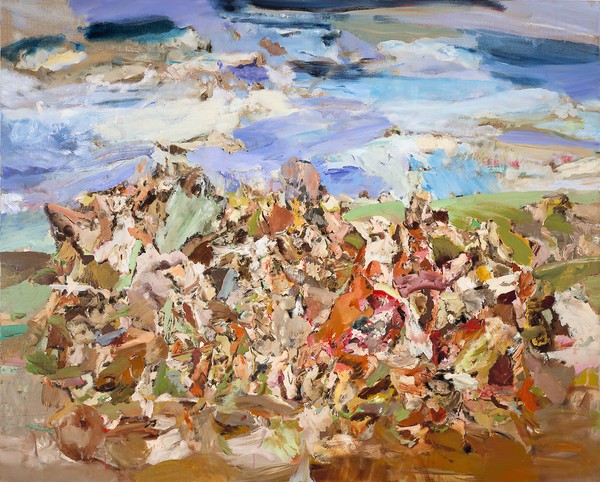
Introduction
For centuries, the contributions of women to the art world were largely omitted from the dominant historical narrative. While the works of male artists were studied, exhibited, and collected, women remained footnotes or exceptions. But in 2025, the script is changing. Contemporary female artists are not only creating powerful work but also reframing how we understand art history. They are reclaiming visibility, redefining aesthetic norms, and reminding the world that their presence in art is not new—just long overlooked. This article explores how women are transforming both the creation and curation of art today and what that means for the future.
A Brief Look at Women’s Roles in Art History
Historically, women were often barred from formal artistic training, limited to still-life or portraiture, and discouraged from pursuing professional careers. Despite these barriers, artists such as Artemisia Gentileschi, Judith Leyster, Sofonisba Anguissola, and Hilma af Klint made significant yet under-recognized contributions. Their work often mirrored their unique experiences—Gentileschi’s intense biblical scenes hinted at her own struggles, while af Klint’s abstract visions predated Kandinsky’s but were hidden for decades.
The feminist art movement of the 1960s and ’70s began to challenge this exclusion, paving the way for women to gain a foothold in the professional art world. From Judy Chicago’s The Dinner Party to Faith Ringgold’s story quilts, women began using art as a platform for reclaiming space and visibility.
The Modern Revival: Women Reclaiming the Canvas
In 2025, female artists are leading some of the most dynamic and influential movements in contemporary art. Their work is not merely celebrated; it’s essential. Leading institutions, from the Tate Modern to the Whitney Museum, have launched dedicated efforts to amplify women’s voices. Exhibitions like “Radical Women: Latin American Art” and “Women Take the Floor” have given overdue recognition to artists who had long been in the shadows.
Digital platforms have further shifted the paradigm. Women artists now use Instagram, TikTok, and NFTs to reach collectors, curators, and global fans directly—disrupting the gatekeeping historically dominated by male-centric institutions.
Today’s Leading Female Artists and Their Impact
A new generation of women artists is pushing boundaries and achieving remarkable market success:
Njideka Akunyili Crosby combines painting, photo transfer, and collage to depict Nigerian-American identity. Her 2024 work Still You Bloom in This Land of No Gardens sold for over $3.4 million.
Julie Mehretu, an Ethiopian-American abstract painter, has explored urban landscapes and social upheaval. Her large-scale works, like Black City, command prices upwards of $9.3 million.
Cecily Brown, known for energetic, lush canvases that blend figuration and abstraction, remains a market favorite with auction prices surpassing $6 million.
Toyin Ojih Odutola crafts graphite and ink portraits that challenge race, privilege, and personal storytelling. Works from her A Countervailing Theory series are held in MoMA and LACMA collections, selling in the mid-six-figure range.
These women aren’t just making waves—they’re steering the ship.
The Market Shift: Growing Investment in Female Artists
Collectors and institutions have finally begun to correct historical imbalances. Data from Art Basel shows a 34% year-over-year growth in sales of women-created art. Major auction houses like Sotheby’s and Christie’s are hosting women-only evening sales and dedicating catalog space to underrepresented voices.
One remarkable case is Lee Krasner, whose market value has skyrocketed. Once known solely as Jackson Pollock’s wife, her bold canvases now command $3–$5 million, with growing museum interest solidifying her legacy.
Female-led galleries such as Hauser & Wirth and Galerie Lelong & Co. are also prioritizing inclusivity, creating ecosystems where female creativity flourishes.
Comparing Today’s Work with Historical Predecessors
While historical women were often constrained by subject matter, today’s artists enjoy expansive freedom. They explore themes like gender fluidity, cultural identity, climate change, and digital alienation.
Artists like Maria Berrio, who combines torn Japanese paper and watercolor to depict immigrant womanhood, echo historical themes of resilience but do so through mixed media and layered global narratives.
This evolution reflects a broader cultural shift where women are not simply adding to the canon—they are reshaping it entirely.
The Future of Women in Art
Looking forward, the trajectory is clear: women are not just rising stars; they’re establishing permanence. Universities and art schools are investing in mentorship programs for women. Curators are building collections with gender parity in mind. And digital art spaces are leveling the playing field for emerging artists worldwide.
With increasing global representation—especially from Africa, Latin America, and Southeast Asia—women in the art world are building a vibrant, multifaceted future. Intersectional feminism is at the forefront, ensuring that diversity of experience is not just acknowledged, but celebrated.
Conclusion
In 2025, women in art are not merely rewriting the narrative—they’re writing entirely new chapters. Their work spans continents, mediums, and ideologies, unified by a commitment to truth, beauty, and empowerment. As the world finally catches up to their brilliance, the art world becomes richer, more honest, and infinitely more inspiring.
The art piece used in this post is called “Gagosian” by Cecily Brown
For Inquiries and Exclusive Promotions:
Explore our curated offerings at Artists Breath.
Discover Our Exquisite Collection:
Immerse yourself in our distinguished selection of fine art at Artists Breath Collection.
Connect with Our Artists and Gallery:
For personalized assistance or to engage with our talented artists, please reach out at info@artistsbreath.com.
Stay Informed with Our Insights:
Subscribe to our Substack for the latest in art and culture at Artists Breath Substack.